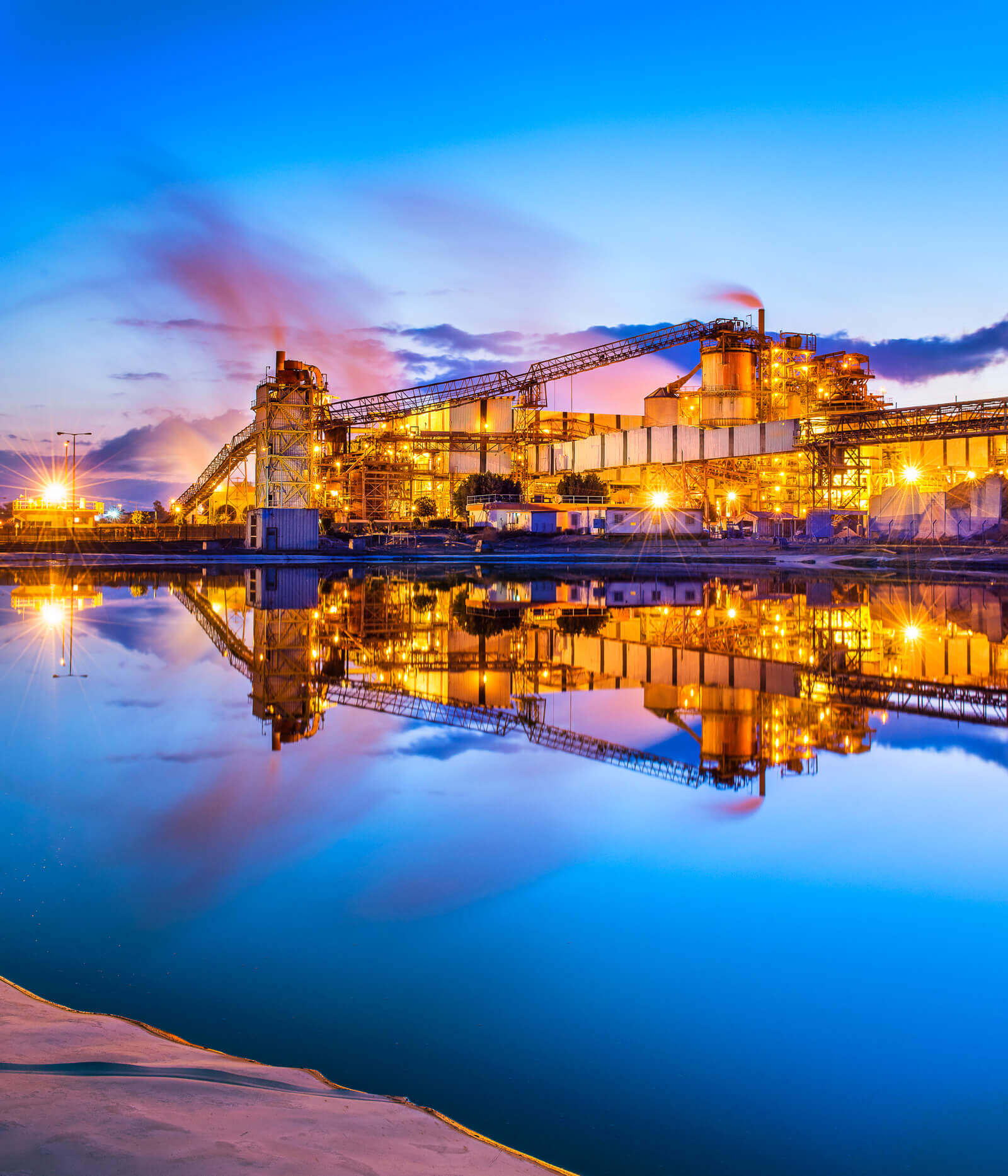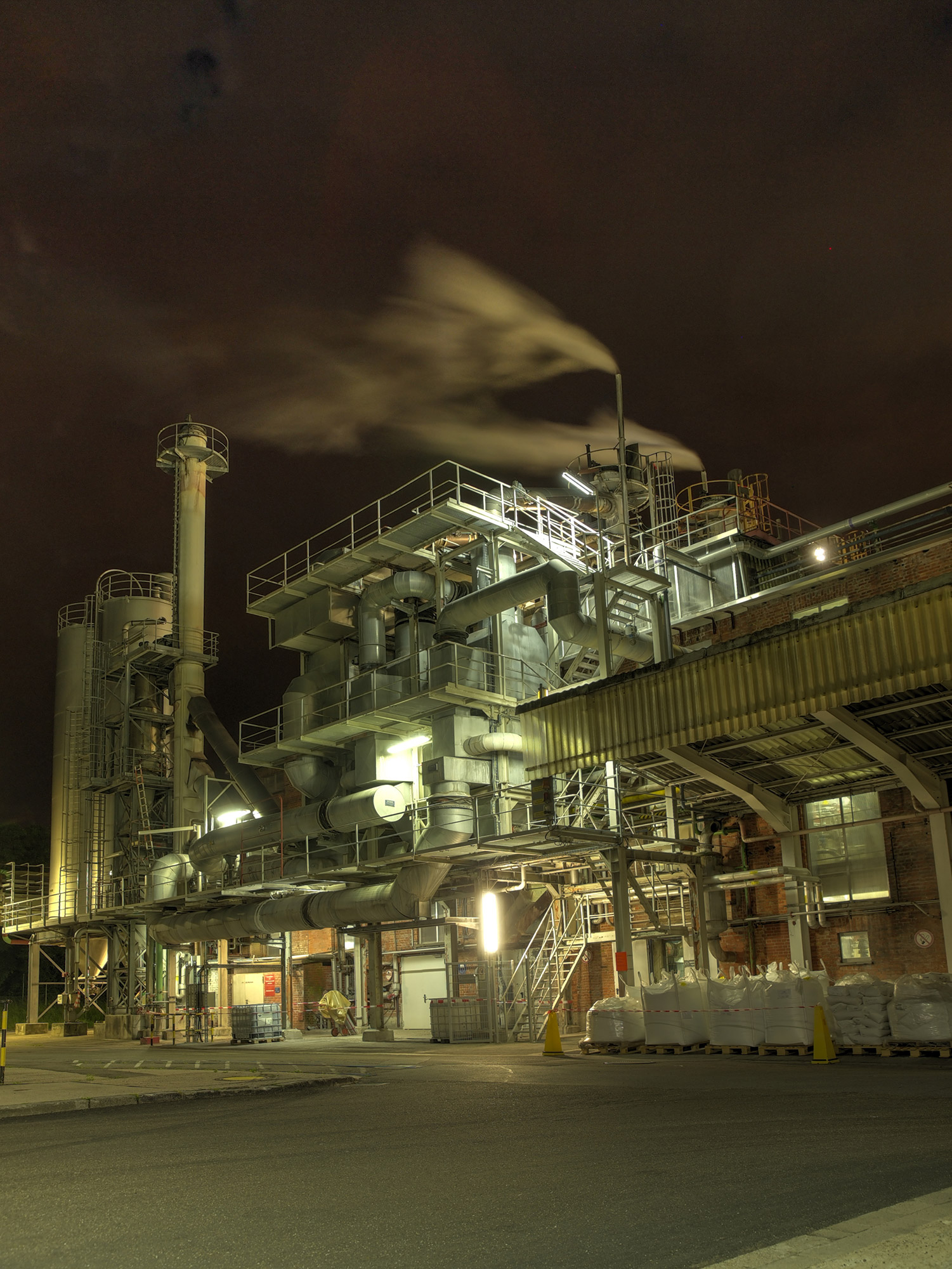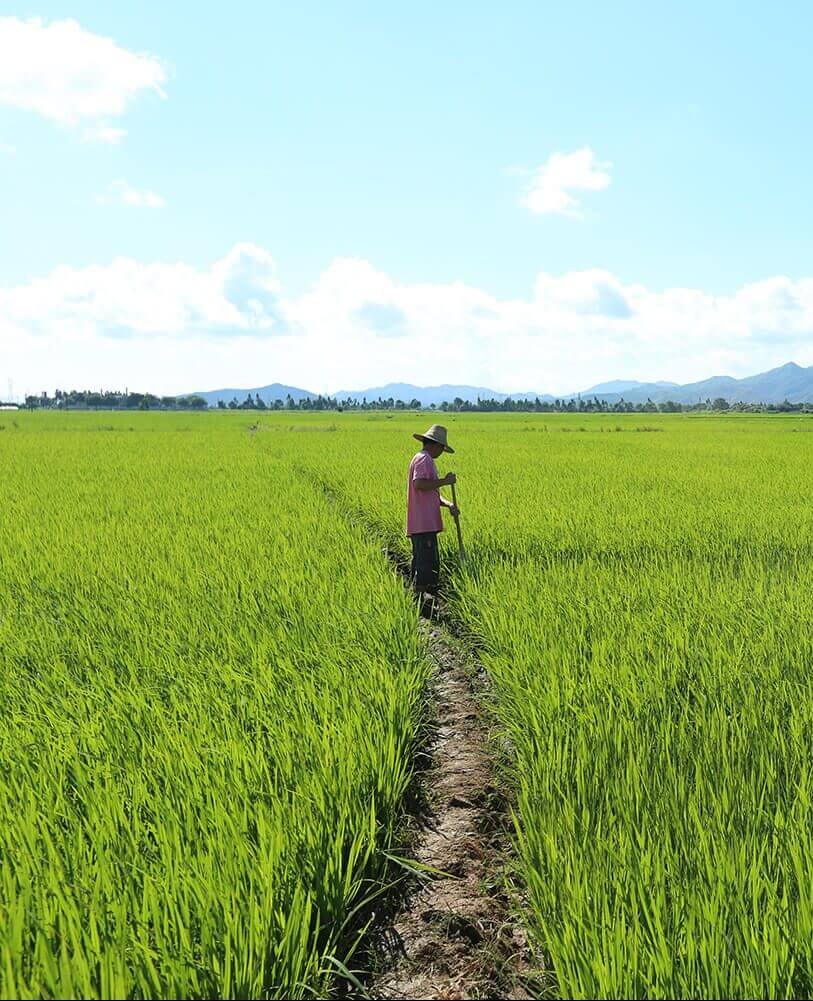GHG & Climate Change
ICL has set a goal of achieving a 25% reduction in its overall Scope 1+2+3 emissions by 2022 (using 2008 as its base year)
Climate change, or global warming, refers to the rise in average surface temperatures on Earth. Climate change results primarily from the use of fossil fuels, which releases carbon dioxide and other greenhouse gases into the air. These trap heat within the atmosphere, which can have a range of effects on ecosystems, including rising sea levels, severe weather events, droughts and others.
By 2018, ICL’s Global GHG emissions have been reduced by 21% compared with 2008 base year emissions. This constitutes 84% of our planned decrease by 2022.
The company has taken various measures to continue reducing its GHG emissions. The main initiatives to date have included:
- Eliminating or reducing process GHG emissions: ICL’s replacement of SF6, previously used as a protective gas during magnesium production, with HFC134a, caused a major reduction at ICL Dead Sea Magnesium. The company has also implemented an innovative system which has reduced N2O emissions at ICL Haifa (F&C) by 60% per ton nitric acid produced. Both projects were approved by the U.N. CDM mechanism.
- Converting our production plants in Israel to the use of natural gas: Natural gas (NG) offers many environmental benefits, including lower emission of greenhouse gases per unit of energy produced.
- Increasing energy efficiency: ICL is phasing out inefficient production technologies, streamlining our production facilities, increasing the efficiency of our consumption of heat and steam, using residual heat and reducing our consumption of lighting and air conditioning.
- Increasing our use of less carbon-intense external electricity: mostly to electricity generated from natural gas, and, where available, from renewable energies.
- Next step: Eliminating Oil Shale combustion: For several decades, ICL Rotem (Israel) has been operating PMA, a CHP (combined heat and power) installation, which is fueled by Oil Shales, extracted as part of Rotem’s open-pit Phosphate mining activity. The usage of Oil Shales was originally encouraged by the Israeli government, as a then alternative fuel source to oil. However, since that time- large NG reserves were found in Israel’s maritime territory, and Oil Shales is now considered an unfavorable fuel source, due to the relatively high amounts of air and GHG emissions it creates upon combustion. ICL Rotem has recently completed a plan to shut down the PMA Oil Shale installation by the end of 2021. The needed electricity and steam will be produced from newer NG based installations, creating a significant reduction in GHG’s and other emissions.
Note: In the chart below, 2008 appears as the base year used by ICL to measure our long-term performance (in addition to short-term, year by year performance).
Following are the yearly trends in total GHG emissions by scope (all converted to CO2e terms). ICL’s comprehensive GHG inventory analysis is based on the GHG Protocol methodology. The measures emissions include the following GHG’s: CO2 , CH4, N2O and HFCs/HCFCs. In 2008 emissions specifically, SF6 is also included, but its usage has since been stopped by ICL (see above), and from 2010 and onwards- there are zero emissions of SF6 in all ICL Operations. In all years, ICL has zero consumption/emission of PFCs and NF3.
Global GHG emissions (scope 1+2+3)
2018 GHG emissions by regions
| Global | Israel | Outside Israel | |
|---|---|---|---|
| Total GHG Emissions | 3,322,817 | 2,222,551 | 1,100,266 |
| Scope 1 (tonne CO2e) | 2,277,666 | 1,735,940 | 541,726 |
| Scope 2 (tonne CO2e- market based) | 952,040 | 399,192 | 552,848 |
| Scope 3 (tonne CO2e) | 93,111 | 87,420 | 5,692 |
Total GHG emissions have been reduced by 21% compared with 2008 base year emissions. This constitutes 84% of the planned global ICL decrease until 2020. The grand majority of reductions are in Scope 1 and 2 emissions.
Specifically in 2018, the total ICL GHG emissions have increased by 5% compared to 2017. The main reason for the increase is related to the new Sdom CHP (Combined Heat and Power) plant. This highly efficient plant has been supplying almost all of the electricity consumption for the ICL Israel sites since August 2018. This electricity is much lower in carbon intensity compared with the previously used external electricity, allowing for significantly decreased Scope 2 emissions. However, the Scope 1 emissions now include more losses from the increased natural gas combustion in the new plant (some losses always exist, despite the highly efficient process). The major ICL project of establishing the new Sdom CHP plant also required a relatively long period of trial-runs for the plant’s proper operation (in 2018: January to July). During these trial-runs, significant amounts of NG were unavoidably consumed even before the plant could provide electricity for the ICL sites. The company’s analysis found that the grand majority of the total GHG emissions increase in 2018 (161 K tonnes CO2e) is attributed to these trial runs, and therefore these emissions are expected to be avoided with the full year normal operation of the CHP plant- from 2019 and onwards. In addition, some of the Scope 1 increase is also attributed to NG used for surplus electricity sold to the national grid (although in relatively small amounts during 2018).
Previously, from 2015 to 2016, ICL’s total GHG emissions have increased by 20%. The great majority of this increase is attributed to the 2016 addition of ICL China YPH JV (purchased in late 2015) to the ICL GHG inventory. Most GHG emissions at YPH JV are generated from its large phosphate and fertilizers plant, 3C, and are attributed to external electricity consumption, process CO2 emissions from phosphate rock acidulation and coal combustion. Like with most ICL major GHG emission sources around the world, these emissions are dependant on production volumes. In 2017, YPH 3C experienced some production shutdowns (due to malfunctions) and a related decrease in GHG emissions. The return to full year normal operation in 2018, has also caused an increase in YPH 3C’s emissions, which also contributed to the overall ICL GHG emissions increase.
Another reason for the 2016 increase was the conclusion of a strike in 2015 and a return to regular production levels at ICL Dead Sea and Neot Hovav.

ICL received the general score of B for it's 2018 CDP Carbon report, and also the maximum score of A, in the CDP's new second sub-ranking, called Supplier Engagement Rating (SER).
ICL expects its total GHG emissions to decrease in 2019, with the first full year operation of newly implemented, high-efficiency power plant in Sdom.
Cooperated climate action: striving for a 90% CO2 reduction in the Zeeland province.
Several large industrial companies, including ICL Terneuzen, located in Zeeland province in the southwestern Netherlands, have created an ambitious climate plan.
The industrial companies, including some of the largest energy consumers in the province, plan to reduce their CO2 emissions by 85% to 90% by 2050, in line with the Paris climate agreement.
The Zeeland companies participating in the climate plan include ICL the Netherlands Terneuzen, Yara (located in Sluiskil), Zeeland Refinery (located in Nieuwdorp), Trinseo, Dow Benelux, and Cargill (located in Sas van Gent). Their climate plan was developed together with companies from West Brabant and Flanders, and calls for using each others’ residual heat and waste materials.
The companies have drawn up a roadmap with measures needed to achieve this objective. The plan includes storage and recycling of CO2 as well as the use of hydrogen.








